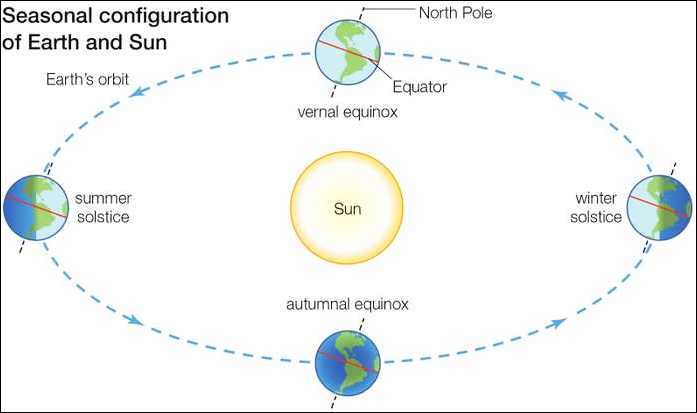Winter Solstice | 22 Dec 2020
Why in News
21st December or the Winter Solstice marks the shortest day of the year in the Northern Hemisphere. The same day marks the Summer Solstice, the year's longest day, in the Southern Hemisphere.
Key Points
- Solstice:
- It is a Latin word that means ‘stalled sun’. It is a natural phenomenon that occurs twice every year, once in the summer and again during winter, in each hemisphere of the earth.
- Winter Solstice:

- It is the shortest day and longest night of the year in the Northern Hemisphere and is also known as the ‘first day of winter’ in the Northern Hemisphere as well as ‘Hiemal solstice or Hibernal solstice’.
- During this, countries in the Northern Hemisphere are farthest from the Sun and the Sun shines overhead on the Tropic of Capricorn (23.5° south).
- At latitudes of 23.5° are the Tropics of Cancer and Capricorn, north and south of the Equator.
- At 66.5° are the Arctic and Antarctic Circles, to the north and south.
- Latitudes are a measure of a location’s distance from the Equator.
- This situation will be reversed on 21st June, when the Northern Hemisphere will see the Summer Solstice, the year’s longest day and the Southern Hemisphere will see the year’s shortest day.
- In Vedic tradition, the northern movement of the Earth on the celestial sphere is implicitly acknowledged in the Surya Siddhanta, which outlines the Uttarayana (the period between Makar Sankranti and Karka Sankranti). Hence, Winter Solstice is the first day of Uttarayana.
- Special Winter Solstice 2020:
- In 2020, the day is special as it coincides with a celestial event, the ‘Great Conjunction’ of Jupiter and Saturn, happening after nearly 400 years.
- The two planets come in conjunction when they have the same right ascension or celestial longitude and that is known as ‘Great Conjunction’.
- Geography Behind:
- The reason behind the changing lengths of the days is the Earth’s tilt.
- The Earth’s axis of rotation is tilted at an angle of 23.5° to its orbital plane. This tilt, combined with factors such as Earth’s spin and orbit, leads to variations in the duration of sunlight, due to which any location on the planet receives different lengths of days.
- The Northern Hemisphere spends half the year tilted in the direction of the Sun, getting direct sunlight during long summer days. During the other half of the year, it tilts away from the Sun, and the days are shorter.
- The tilt is also responsible for the different seasons on Earth. This phenomenon causes the movement of the Sun from the northern to the southern hemisphere and vice versa bringing in seasonal changes in the year.
